Invest 30 seconds...
...for what may lead to a life altering association!
Help Line
- +91.8800.2828.00 (IND)
- 1030-1830 Hrs IST, Mon-Sat
- support@expertsglobal.com
...for what may lead to a life altering association!


The GMAT format includes three sections: Quantitative Reasoning (21 questions), Verbal Reasoning (23), and Data Insights (20), each 45 minutes. The test includes an optional 10-minute break and lasts about 2 hours 15 minutes. Scores range from 205 to 805, based on overall performance.
| Section | # Questions | Time Limit | Main Question Types | Sectional Score | Total Score |
|---|---|---|---|---|---|
| Quantitative Reasoning | 21 | 45 minutes | Problem Solving | 60 to 90 |
205 to 805
(Based on the 3 sectional scores) |
| Verbal Reasoning | 23 | 45 minutes | Reading Comprehension, Critical Reasoning | 60 to 90 | |
| Data Insights | 20 | 45 minutes | Table Analysis, Multi-Source Reasoning, Graphics Interpretation, Two-Part Analysis | 60 to 90 | |
| Optional Break | — | 10 minutes | — | — | |
| Total | 64 | 2 hrs 15 min (+ optional break) | — | — |
Wish to know your level on GMAT? Take a free GMAT diagnostic test
The GMAT Quantitative Reasoning section tests your ability to solve mathematical problems across arithmetic, algebra, number properties, word problems, graphs and tables, and combinatorics and probability. The GMAT’s Quant section consists of 21 multiple-choice problem-solving questions to be completed in 45 minutes. The section focuses on analytical thinking rather than complex calculations, with no geometry included. Candidates receive a scaled score on a range of 60-90. Certainly. The Quantitative Reasoning section is a vital part of GMAT preparation, not only because it contributes one-third to your score, but also because it builds strong problem-solving ability, mathematical thinking, and logical clarity.
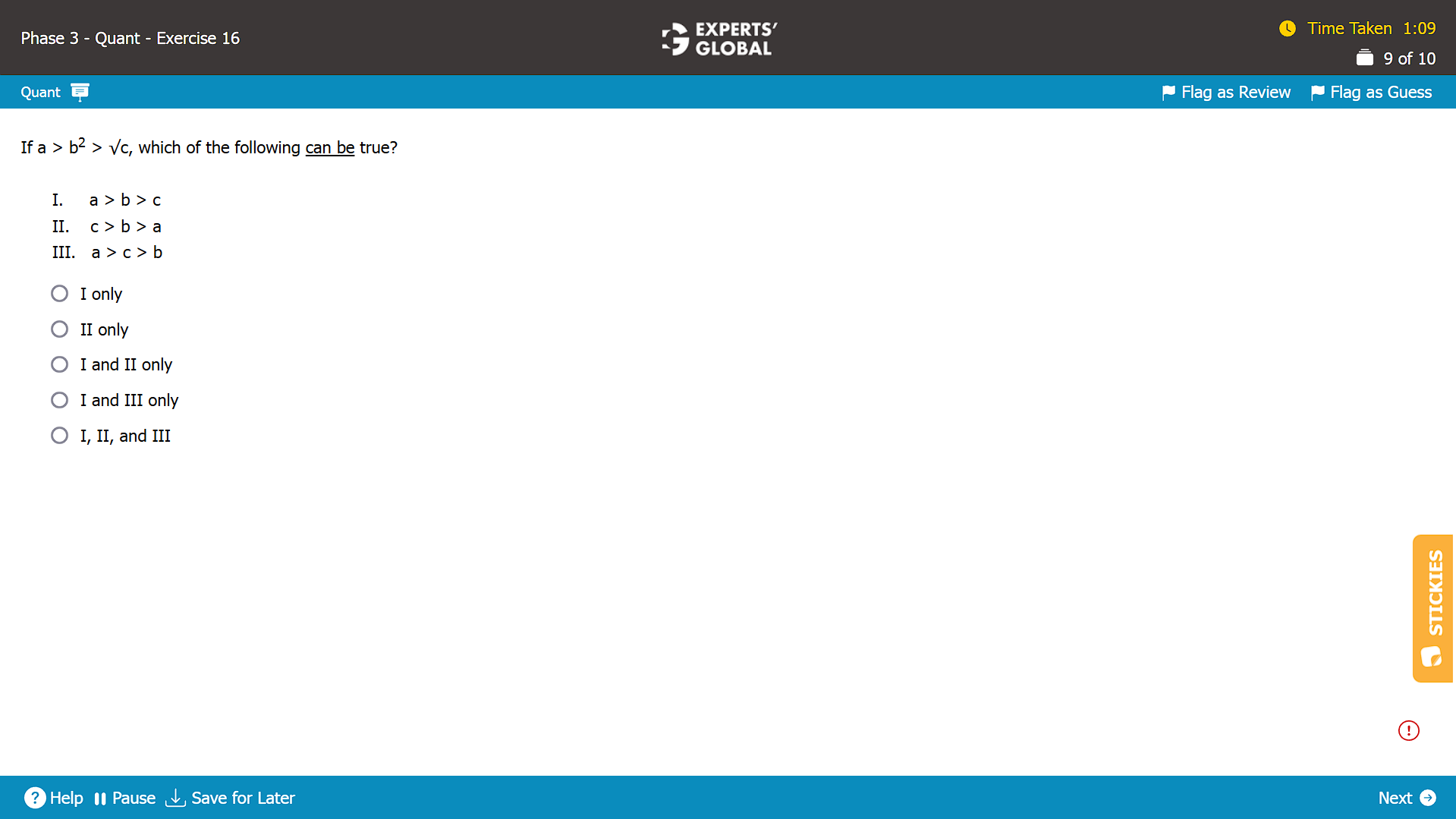
Correct Answer: D
The GMAT Verbal Reasoning section evaluates your ability to understand and analyze written material and to reason and evaluate arguments. It includes 23 multiple-choice questions to be completed in 45 minutes, covering Reading Comprehension and Critical Reasoning. Candidates receive a scaled score on a range of 60-90.
GMAT Reading Comprehension questions check how well you understand and think through written passages. You will read short texts, often on business or academic topics, and answer questions about the main idea, details, or what the author is trying to say. It’s all about reading carefully and thinking critically about what you’ve read.
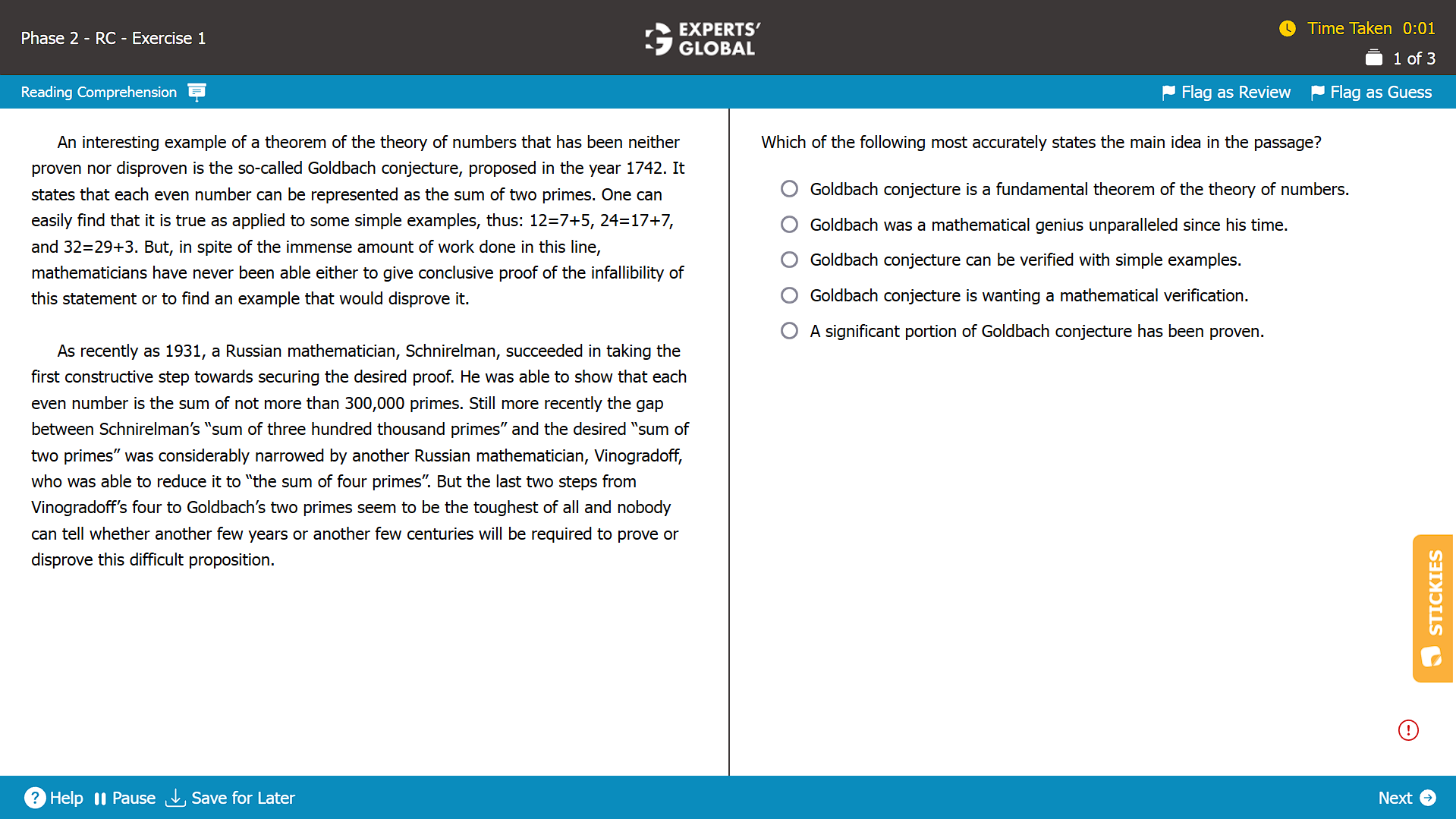
Correct Answer: D
GMAT Critical Reasoning questions test how well you can understand and evaluate arguments. You will read a short paragraph and then answer a question about it: like what strengthens, weakens, or explains the argument. It’s all about thinking logically, spotting assumptions, and choosing the most reasonable response based on the info given.
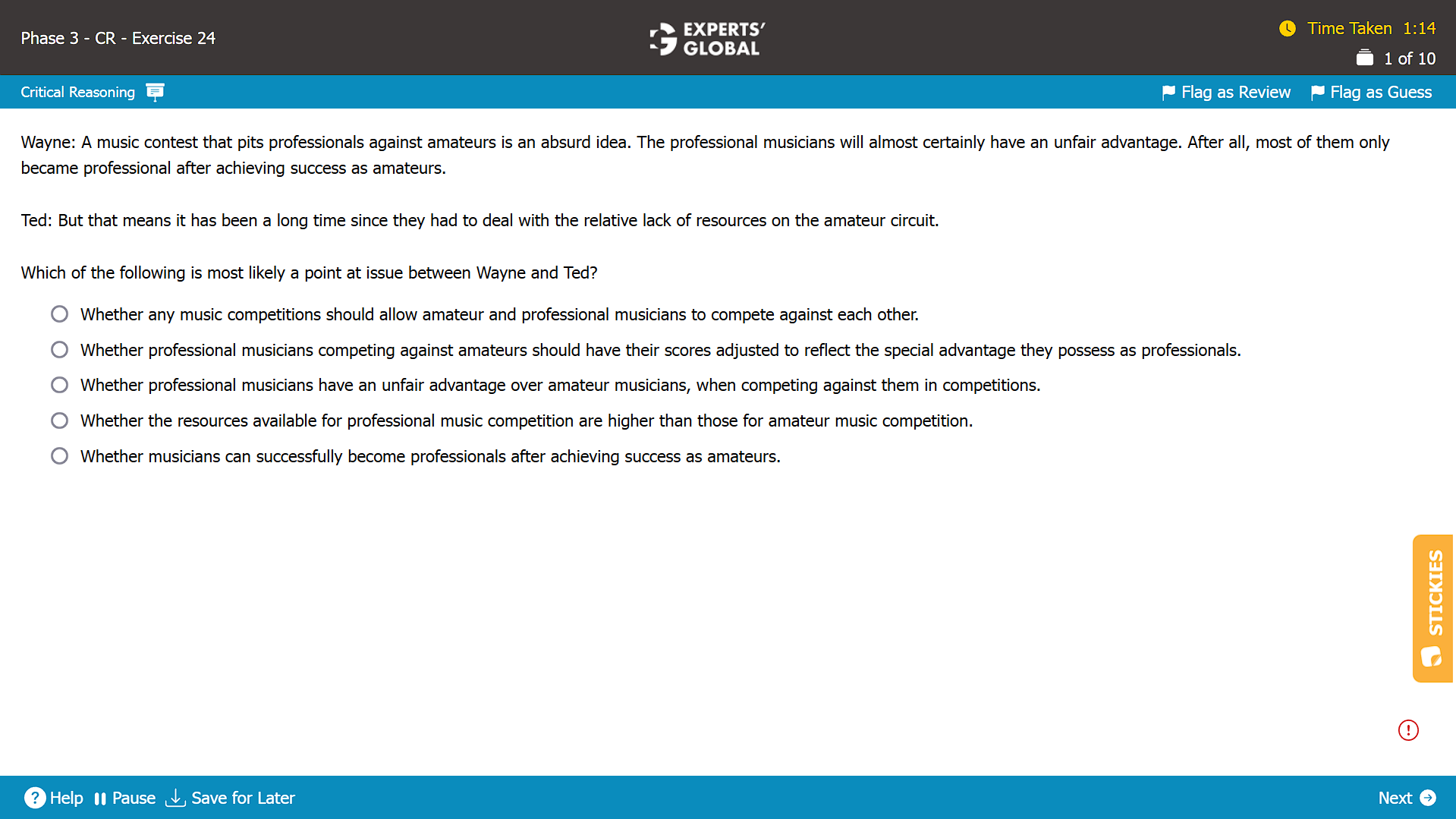
Correct Answer: C
The GMAT Data Insights section tests how well you analyze and interpret data from different sources. You will get 20 questions in 45 minutes, covering data sufficiency, table analysis, multi-source reasoning, graphics interpretation, and two-part analysis. It’s about using logic and data to answer questions based on charts, graphs, and written information.
GMAT Data Sufficiency questions are a unique type of math problem. Instead of solving for an exact answer, you will be asked whether the information provided is enough to answer the question. You will see a question followed by two separate statements. Your task is to decide if one, both, or neither of the statements provides enough data to solve the problem. It is less about calculation and more about logical thinking, understanding conditions, and knowing when you have sufficient information to move forward.
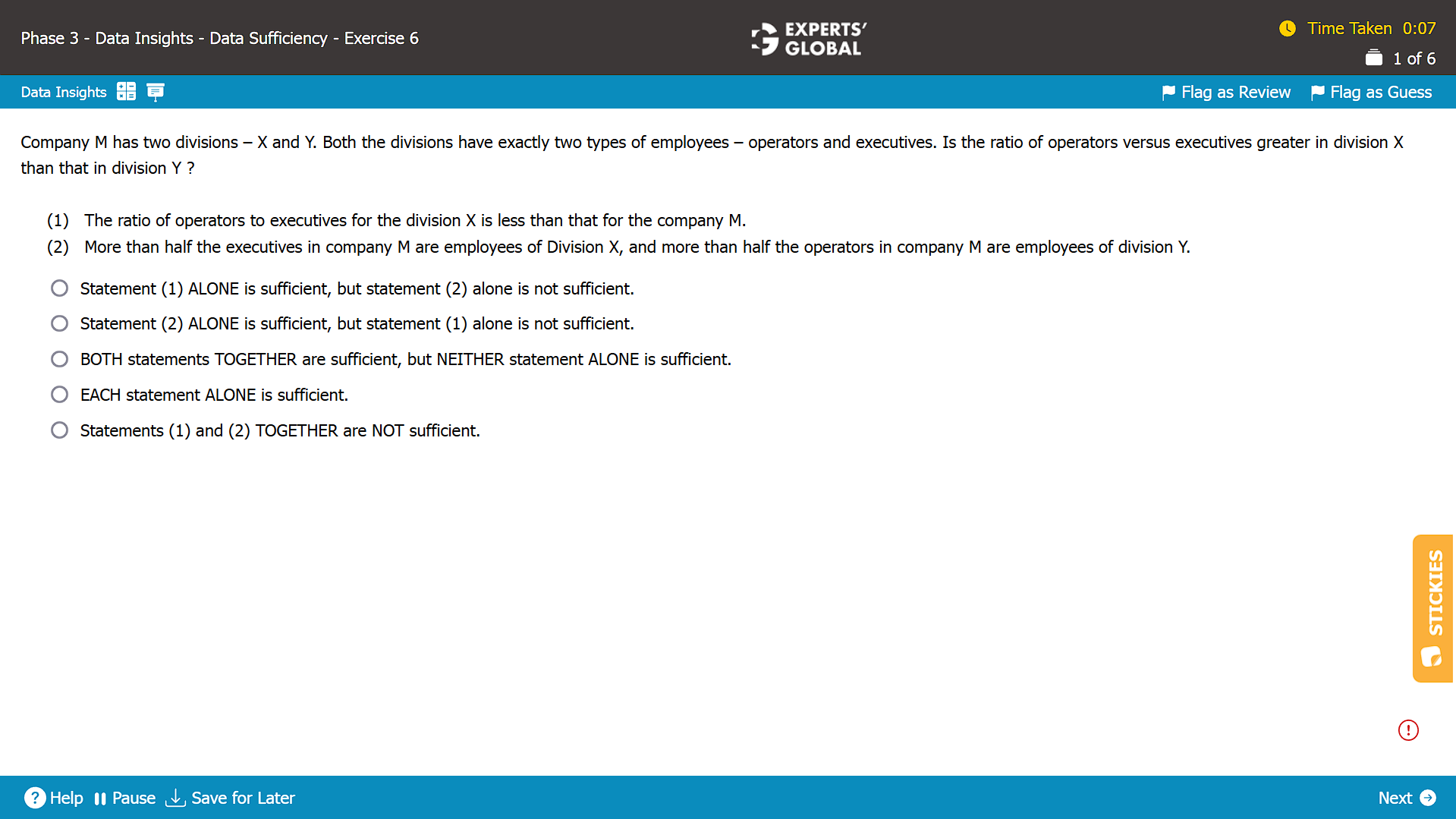
Correct Answer: D
GMAT Table Analysis questions show you a spreadsheet-style table with sortable columns. You will answer true/false or yes/no questions based on the data. It’s all about quickly spotting patterns, comparing values, and filtering information. You don’t need complex math; rather, you just need clear thinking and attention to detail to draw the right conclusions. An on-screen calculator is anyway available.
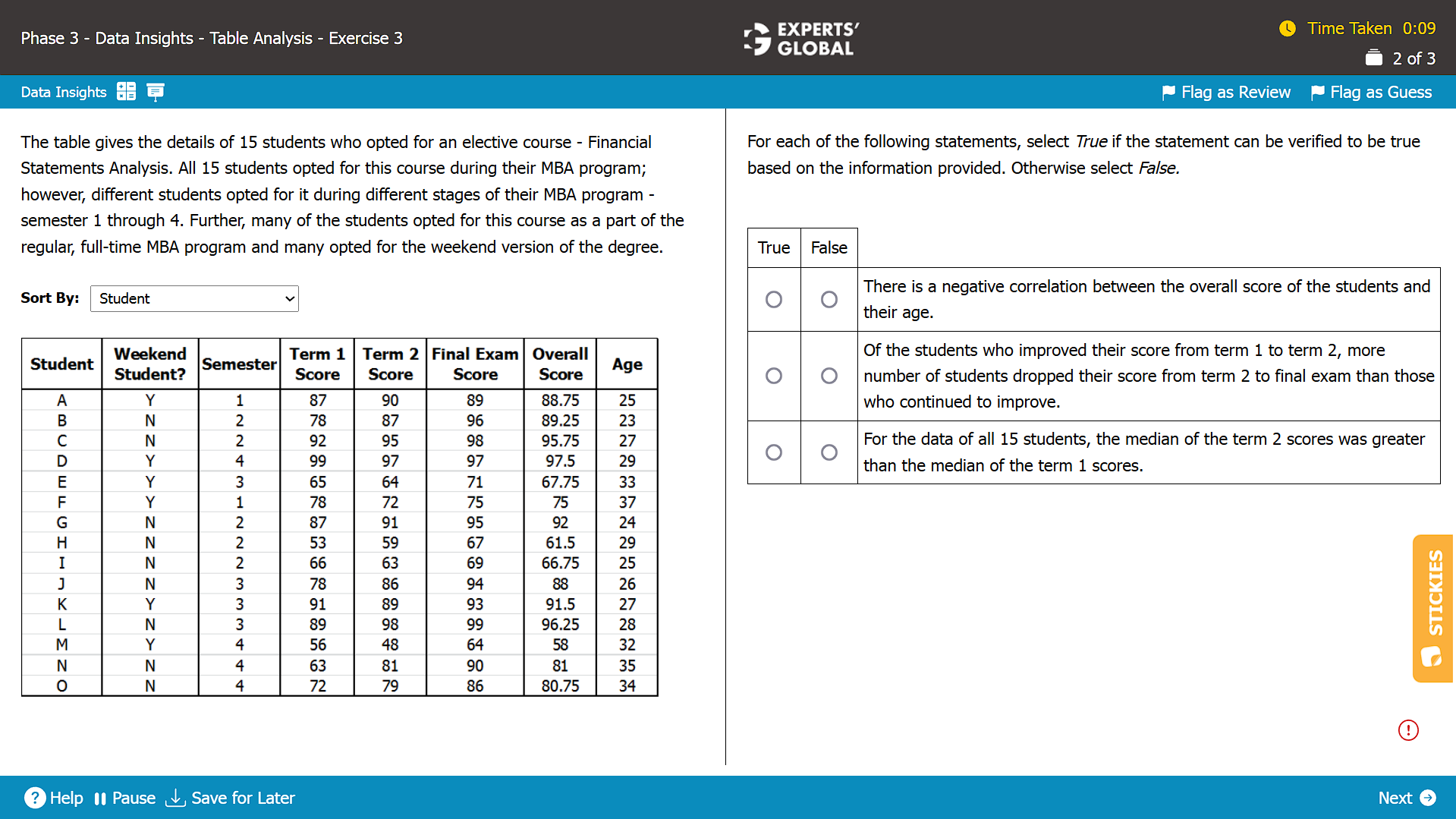
Correct Answer: False-False-True
GMAT Multi-Source Reasoning questions present information in multiple tabs, such as text, tables, or charts. You will switch between them to answer questions that test your ability to compare data, find relationships, and draw conclusions. It’s about analyzing different types of info together to make well-reasoned decisions. Caution: this question type can be very time consuming. Please ensure due practice.
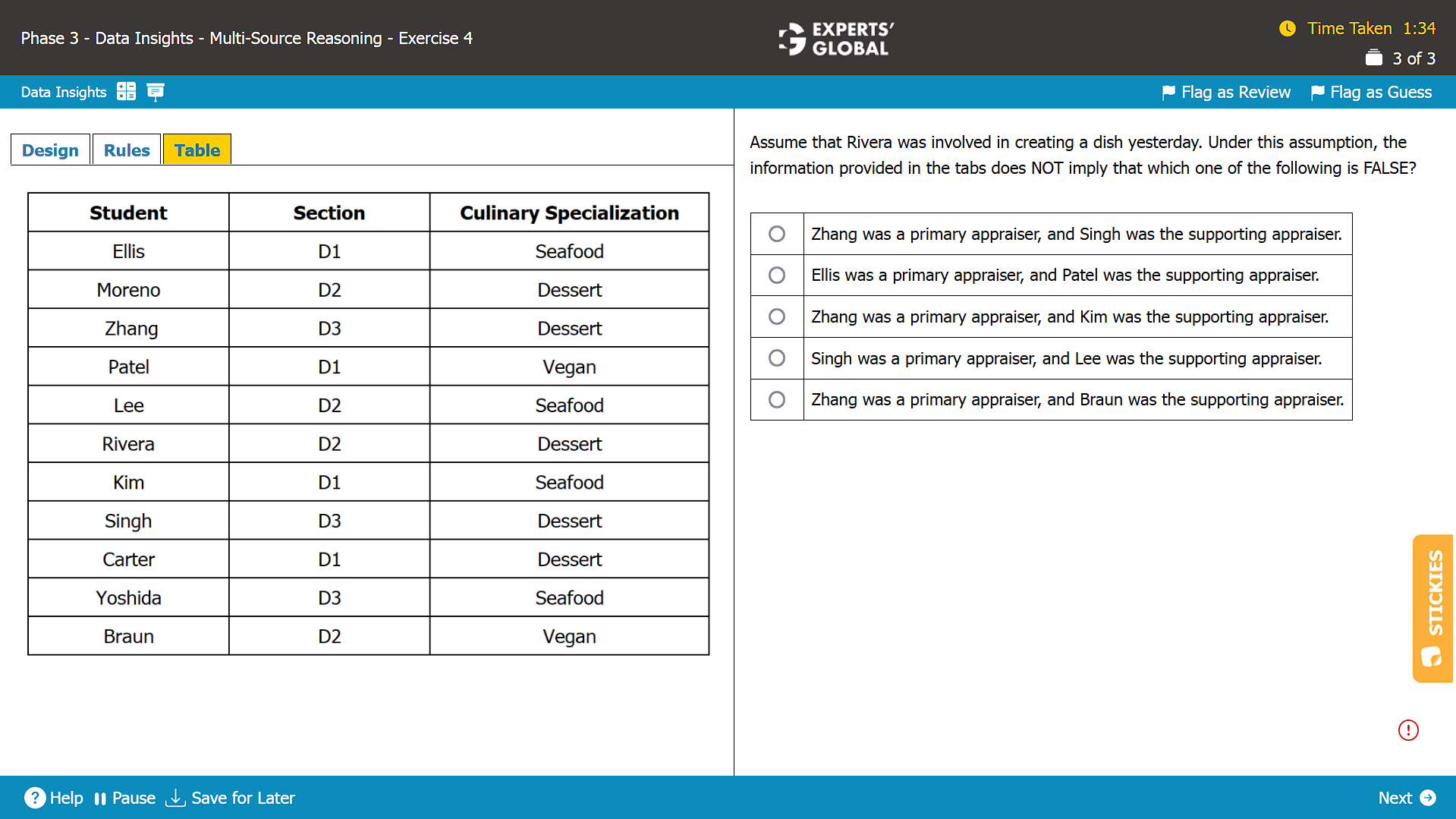
Correct Answer: C
GMAT Graphics Interpretation questions show you visual data, like bar charts, line graphs, or scatter plots. You will answer fill-in-the-blank style questions based on the graph. It’s all about understanding what the visuals show, spotting trends or patterns, and using that info to make logical, data-driven decisions quickly and accurately.
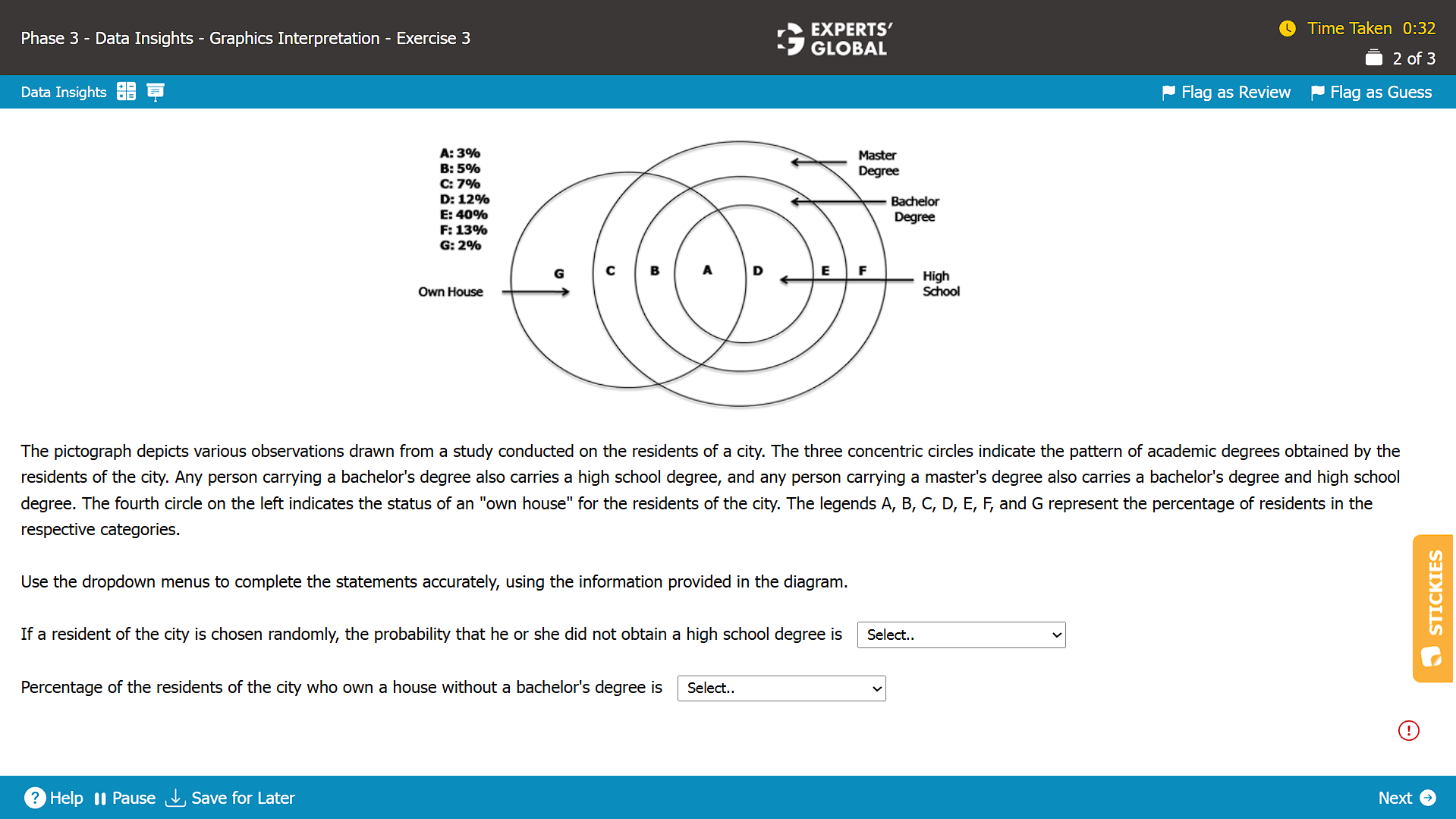
Correct Answer: 20% and 5%
GMAT Two-Part Analysis questions present a short problem with two related questions. You will choose one answer for each part from the same set of options. The topics can be math, logic, or verbal.
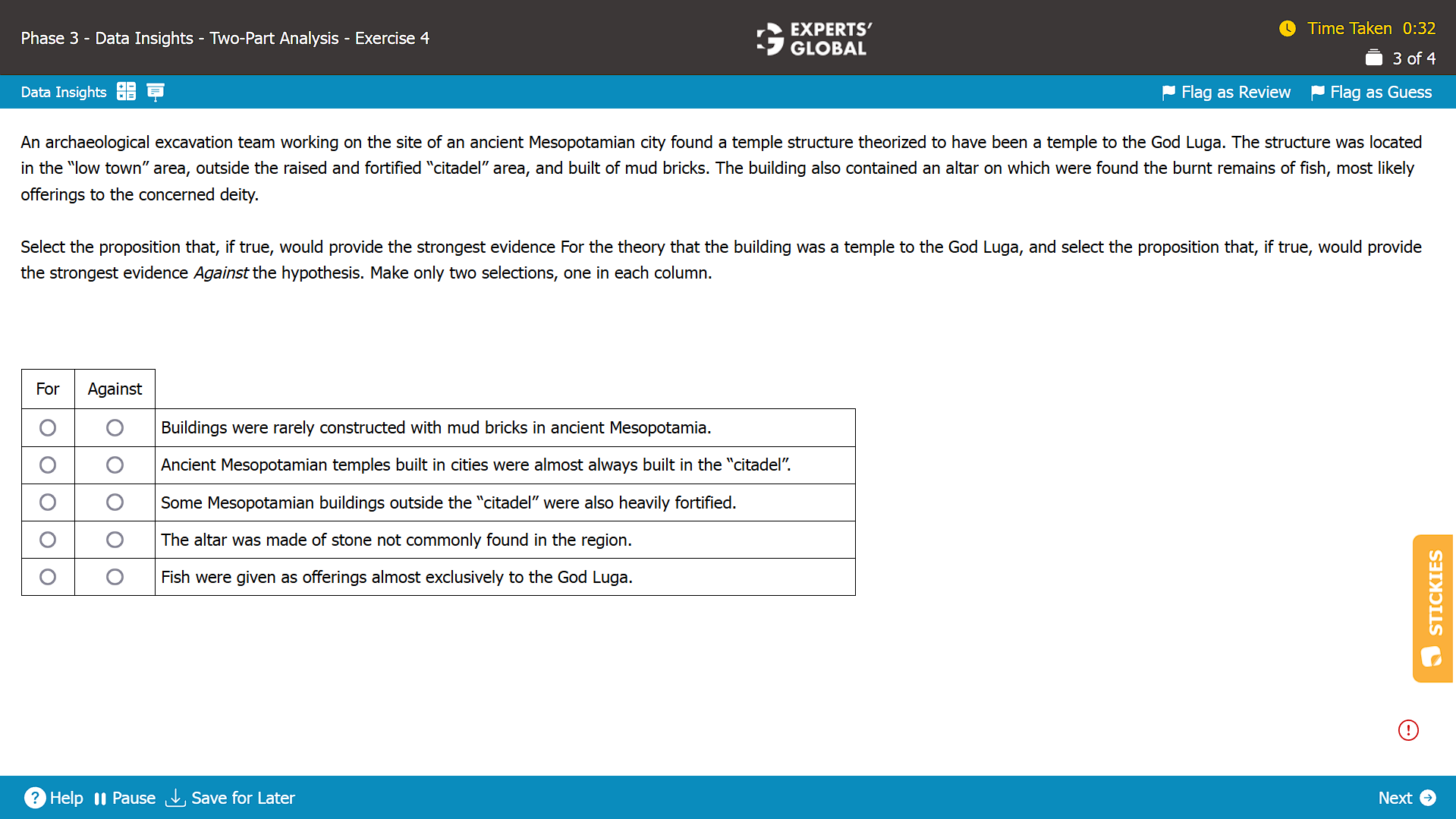
Correct Answer: E and B
Each GMAT section – Quantitative Reasoning, Verbal Reasoning, and Data Insights, is scored individually on a scale of 60 to 90. These section scores are equally weighted and combined to calculate your total score. The scores reflect both the number of correct answers and the difficulty level of the questions you answered.
The GMAT provides a total score ranging from 205 to 805, based on your performance in Quant, Verbal, and Data Insights sections. Each section is equally weighted. The test is computer-adaptive, and scores reflect both accuracy and question difficulty. Section scores are also reported separately on a 60 to 90 scale.
The GMAT uses adaptive scoring, which means the questions change in difficulty based on how you are doing. If you answer correctly, the next question gets harder. If you miss one, it gets a bit easier. That is why the first few questions matter more. They help set the tone for the rest of the test and influence your scoring range. Getting off to a strong start can make a big difference in your final score. Even if you do well later, an uncertain start might limit your scoring potential. So it is important to focus early and stay sharp. However, please understand that EVERY QUESTION IS IMPORTANT! Please visit the following page to know more about the GMAT scoring: How is the GMAT Scored?
You can register for the computer adaptive test on mba.com.
An experienced MBA admission consultant adds value well before the application process begins. By starting early, you benefit from expert advice on structuring your GMAT preparation, selecting effective resources, and identifying the ideal time to take the test. The consultant also helps you balance your study schedule with profile-building efforts, ensuring a steady and focused path. Beyond planning, the consultant offers clarity, motivation, and long-term perspective. With a firm grasp of how GMAT performance impacts your overall admissions strategy, a skilled consultant becomes a trusted mentor through every stage of your MBA pursuit.
The GMAT is more than just an entrance exam; its format reflects the core skills that drive success in business and beyond. Time management, critical thinking, precision under pressure, and decision-making with limited information are all traits the test nurtures. Preparing for the GMAT is not simply about solving questions or mastering sections. It is about developing a disciplined, structured way of thinking that applies far beyond the test center. The format may be standardized, but the journey it demands is deeply personal. In understanding the GMAT, you also begin to understand the mindset required for true leadership.
Simplify your MBA journey with our all-in-one GMAT preparation and application support solution